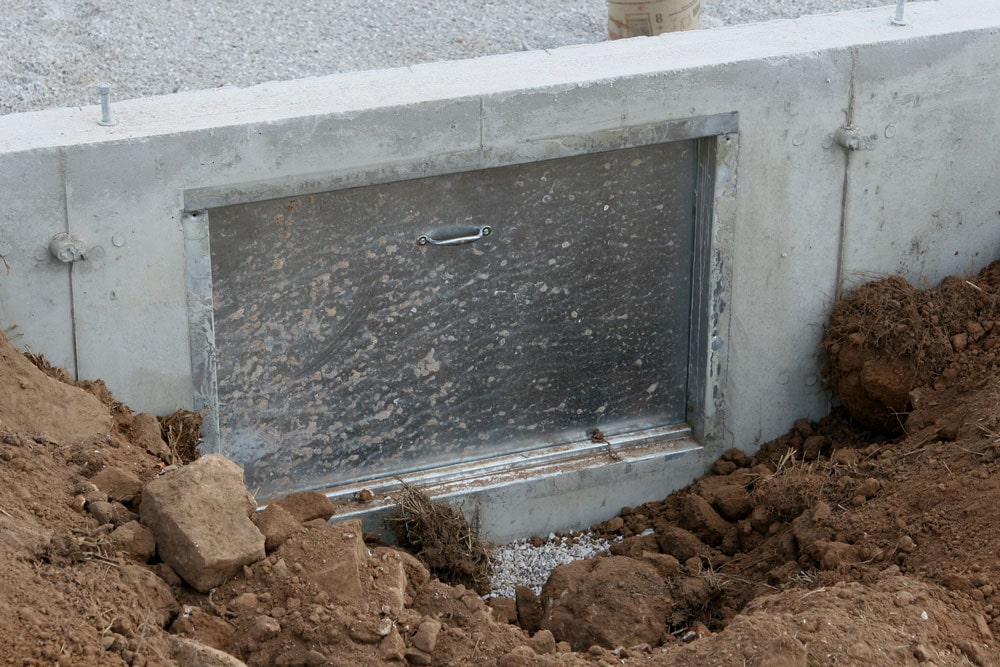
Insulating your crawl space is one of the best ways to improve energy efficiency, prevent moisture problems, and maintain healthy indoor air quality. However, the project complexity increases when your crawl space has a dirt floor. That doesn’t mean it’s not worth doing – all crawl spaces can benefit from encapsulation – but you should approach the project with extra care.
At Crawl Space Ninja, we’ve seen firsthand the challenges that come with insulating crawl spaces with exposed soil. Here’s what homeowners should know about the process, the potential complications, and why you should hire professionals to get the job done right.
Why Insulate a Crawl Space With a Dirt Floor?
Even when your crawl space is out of sight and out of mind, it influences your home’s energy performance and moisture control in ways you may not realize.
Proper crawl space insulation can:
- Reduce your heating and cooling costs
- Keep your floors warmer in winter and cooler in summer
- Prevent mold and mildew caused by excess humidity
- Improve indoor air quality by sealing out allergens and pollutants
- Extend the life of HVAC ductwork and plumbing
- Avoid long-term issues and protect your home’s value
What Makes Dirt Floors Difficult to Insulate?
Insulating a crawl space with a dirt floor comes with specific challenges that aren’t present in crawl spaces with concrete slabs or sealed surfaces.
1. Persistent Moisture
Dirt floors naturally release moisture into the air, increasing humidity levels in the crawl space. That moisture can reduce the effectiveness of insulation and create ideal conditions for mold, rot, and pests.
2. Uneven Surfaces
A dirt floor is rarely level. Installing insulation or a vapor barrier over an uneven surface requires careful grading and preparation to ensure a proper seal.
3. Limited Clearance
Many crawl spaces have low ceilings, making it difficult to maneuver and properly install insulation around joists, ducts, and plumbing lines.
4. Soil Shifting and Settling
The soil in a crawl space can shift or settle over time, potentially damaging insulation or creating gaps where moisture and air can enter.
5. Mold and Pest Activity
Damp, exposed soil attracts insects and rodents and promotes mold growth, which can all interfere with insulation materials and damage your home’s structure.
Solutions for Insulating a Crawl Space With a Dirt Floor
While it’s more challenging to insulate a crawl space with a dirt floor, it’s doable with the appropriate expertise and materials.
1. Install a Vapor Barrier
A thick vapor barrier is essential for covering exposed soil and stopping ground moisture from entering the crawl space. Crawl Space Ninja’s team uses durable, reinforced liners to completely seal the area and prevent condensation, mold, and dampness.
2. Grade and Level the Floor
Before laying down a vapor barrier or insulation, we grade the soil to create an even surface for effective sealing.
3. Seal Vents and Gaps
To improve insulation performance and prevent air leaks, we seal off vents, cracks, and any openings that allow outside air and moisture to enter.
4. Install a Dehumidifier
We often recommend a crawl space dehumidifier to keep humidity levels in check year-round.
Protect Your Home With Professional Crawl Space Insulation
Insulating a crawl space with a dirt floor is not a simple DIY project. It requires:
- Knowledge of building science and moisture control
- Specialized equipment for working in tight spaces
- Proper materials to ensure long-term durability
- Experience identifying and solving hidden issues
Crawl Space Ninja creates custom crawl space repair, moisture control, and encapsulation plans for homes with dirt floors. We handle grading, vapor barriers, insulation, moisture control, and everything in between – protecting your crawl space from the ground up.
Schedule a consultation today and find out how our team can transform your crawl space into a dry, healthy, and efficient part of your home.
